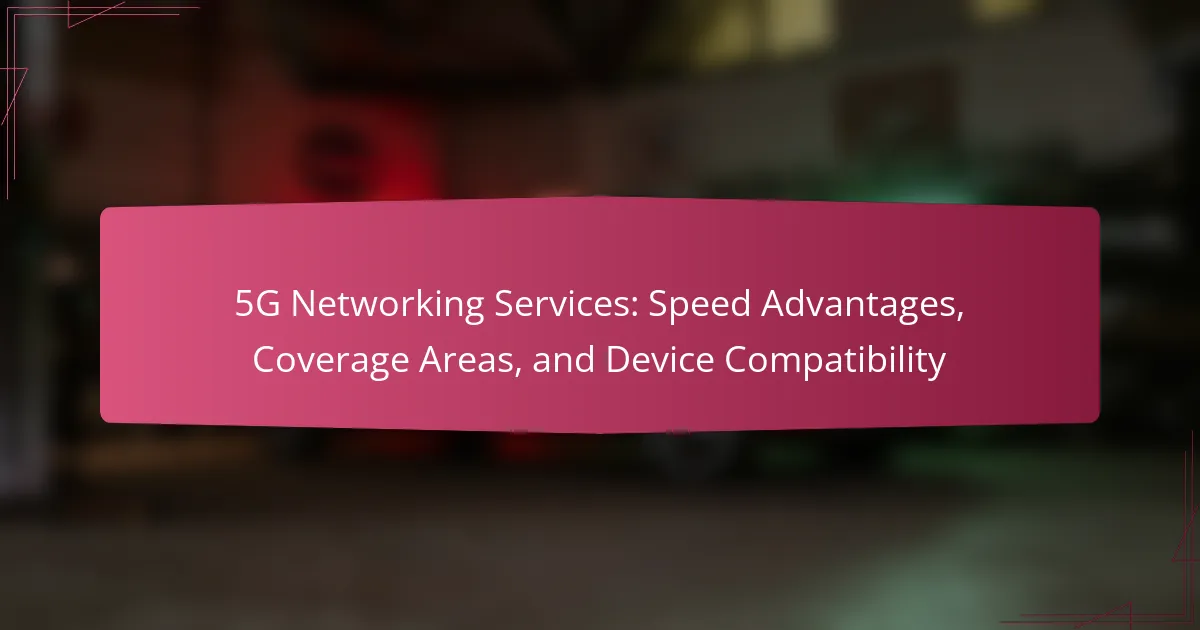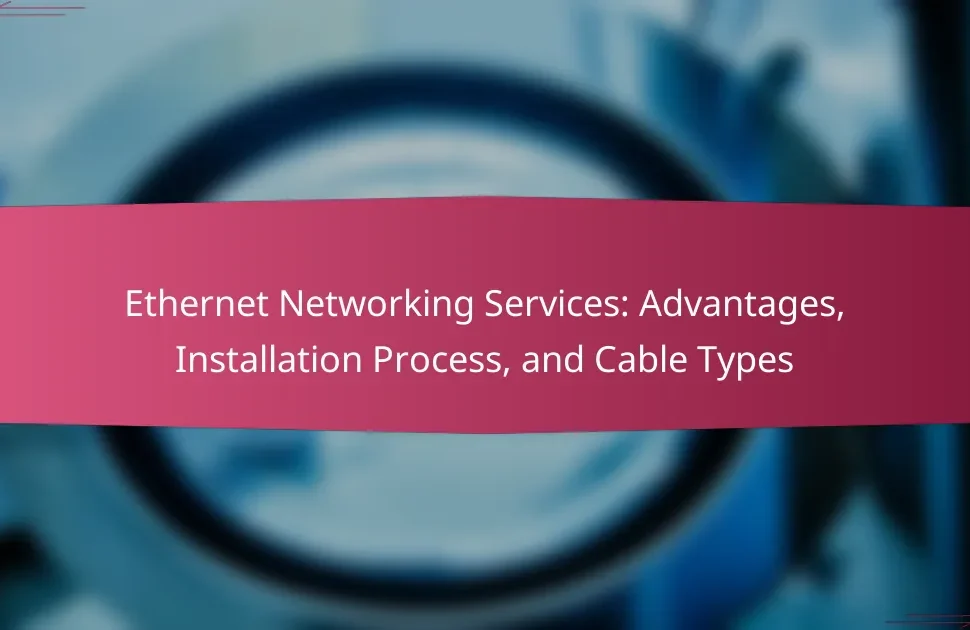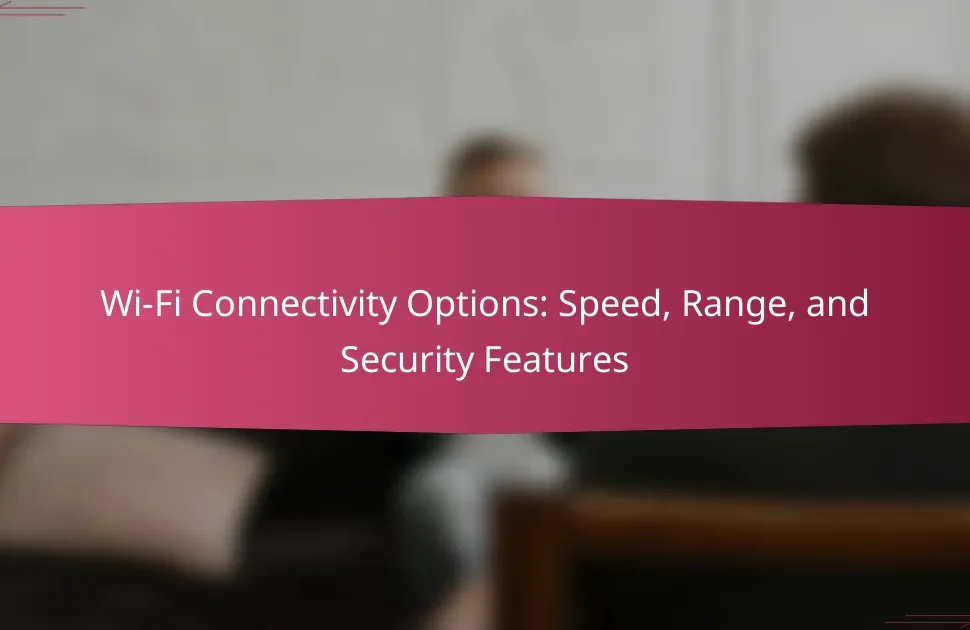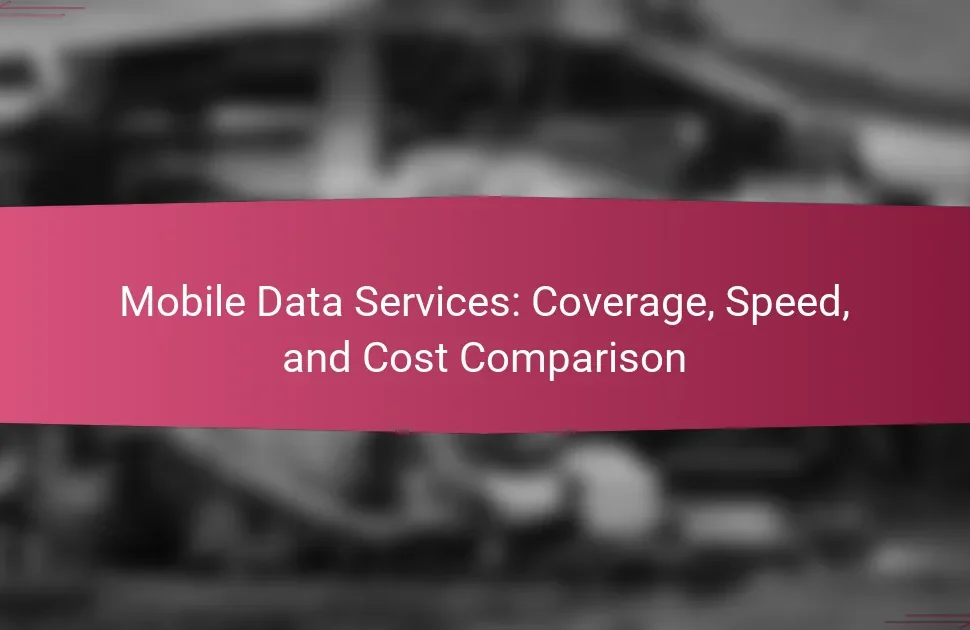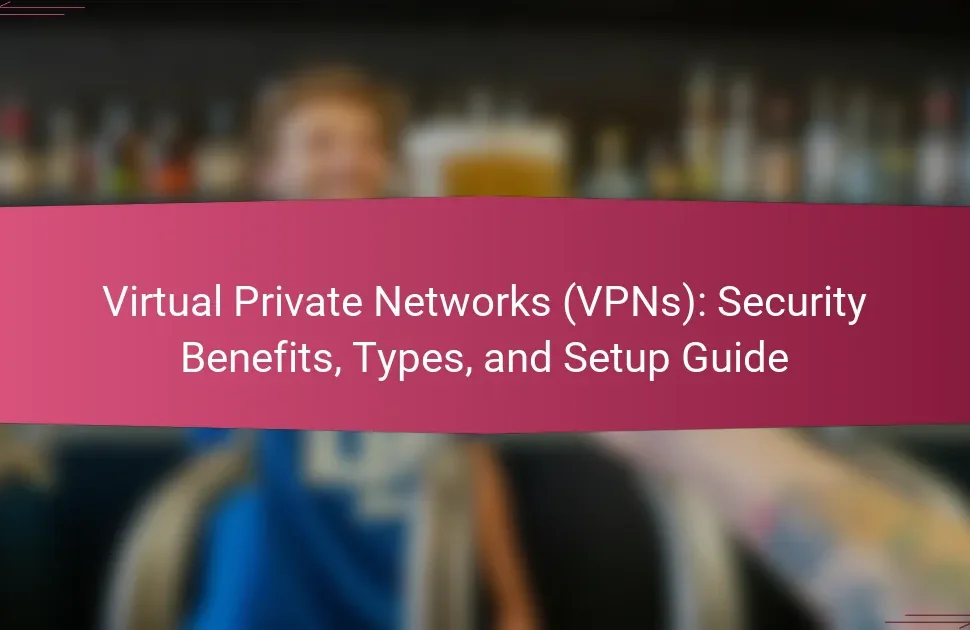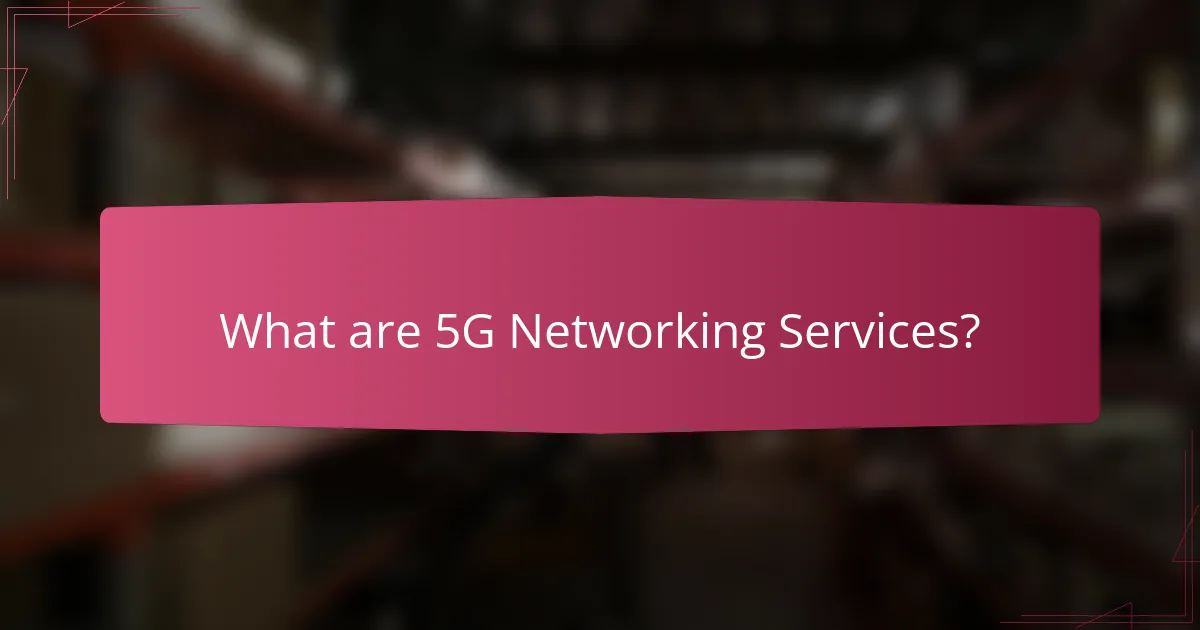
What are 5G Networking Services?
5G networking services are advanced telecommunications services that utilize fifth-generation technology. They offer significantly higher speeds compared to previous generations. 5G can achieve download speeds of up to 10 Gbps. This technology also supports lower latency, enhancing real-time communication. 5G networking services enable a larger number of connected devices in a given area. They facilitate the growth of the Internet of Things (IoT). Enhanced mobile broadband is a key feature of 5G services. These services are critical for applications such as autonomous vehicles and smart cities.
How do 5G Networking Services differ from previous generations?
5G Networking Services differ from previous generations primarily in speed, latency, and capacity. 5G networks can achieve speeds up to 10 Gbps, significantly faster than 4G’s maximum of 1 Gbps. Latency in 5G can be as low as 1 millisecond, compared to 30-50 milliseconds in 4G. 5G also supports a much higher density of devices, enabling up to 1 million connections per square kilometer, while 4G supports around 100,000. Additionally, 5G utilizes new frequency bands, including millimeter waves, which allow for greater bandwidth. This technology enables enhanced mobile broadband, ultra-reliable low-latency communications, and massive machine-type communications. These advancements make 5G suitable for applications like smart cities, autonomous vehicles, and IoT devices.
What are the key features of 5G technology?
5G technology features enhanced speed, low latency, and increased capacity. It offers download speeds up to 10 Gbps, significantly faster than 4G. Latency in 5G networks can be as low as 1 millisecond. This technology supports a higher number of connected devices per square kilometer, enabling the Internet of Things (IoT). 5G utilizes new frequency bands, including millimeter waves, for better performance. It also provides improved reliability and network slicing capabilities. These features make 5G suitable for applications like autonomous vehicles and smart cities.
How does 5G enhance connectivity and user experience?
5G enhances connectivity and user experience by providing significantly faster data speeds and lower latency. It delivers download speeds up to 10 Gbps, which is up to 100 times faster than 4G. This speed allows for seamless streaming of high-definition content and quick downloads.
Moreover, 5G reduces latency to as low as 1 millisecond. This near-instant response time improves real-time applications such as gaming and video conferencing. Enhanced connectivity also supports a larger number of devices simultaneously. 5G networks can connect millions of devices per square kilometer, facilitating the growth of the Internet of Things (IoT).
The improved bandwidth allows for better performance in crowded areas, such as stadiums or urban environments. Users experience fewer interruptions and faster connections, leading to an overall improved digital experience. These advancements make 5G a crucial technology for future connectivity needs.
What speed advantages do 5G Networking Services offer?
5G Networking Services offer significantly higher speeds compared to previous generations. They can achieve peak download speeds of up to 10 Gbps. This is approximately 100 times faster than 4G networks. The low latency of 5G, around 1 millisecond, enhances real-time communication. Enhanced capacity allows more devices to connect without speed degradation. These speed advantages enable smoother streaming, faster downloads, and improved gaming experiences. The increased bandwidth supports advanced applications like augmented reality and virtual reality. Overall, 5G provides a transformative leap in mobile connectivity.
How fast is 5G compared to 4G and other technologies?
5G technology is significantly faster than 4G, offering speeds up to 10 Gbps. In contrast, 4G typically provides speeds around 100 Mbps to 1 Gbps. This means 5G can be up to 100 times faster than 4G. Additionally, 5G has lower latency, often around 1 millisecond compared to 30-50 milliseconds for 4G. Other technologies, like 3G, offer even slower speeds, generally ranging from 1 Mbps to 10 Mbps. The advancements in 5G are due to enhanced bandwidth and advanced antenna technology. These improvements enable faster data transmission and better connectivity in densely populated areas.
What factors influence the speed of 5G networks?
The speed of 5G networks is influenced by several key factors. These factors include frequency band, network density, and environmental conditions. Higher frequency bands, such as millimeter waves, offer faster speeds but have shorter range. Network density refers to the number of base stations in a given area; more stations lead to improved speed. Environmental conditions, such as obstacles and weather, can affect signal strength and speed. Additionally, user equipment capabilities, like antennas and modem technology, also play a role in determining speed. Together, these factors create a complex interplay that impacts overall 5G network performance.
What coverage areas can users expect from 5G Networking Services?
Users can expect 5G Networking Services to cover urban, suburban, and rural areas. Urban areas typically see the most extensive coverage due to higher infrastructure investments. Suburban areas may have moderate coverage with ongoing expansions. Rural coverage is less common but is gradually improving through government initiatives and private investments. 5G networks utilize low-band, mid-band, and high-band frequencies to enhance coverage. Low-band offers wide coverage with slower speeds, while high-band provides faster speeds with limited range. According to the Federal Communications Commission, 5G deployment aims to reach 90% of the U.S. population by 2025.
How does the geographical landscape affect 5G coverage?
The geographical landscape significantly affects 5G coverage. Various terrain features can obstruct or enhance signal propagation. Urban areas with tall buildings may create shadow zones, limiting signal strength. Conversely, open areas with fewer obstacles allow for better coverage and higher speeds. Mountains and hills can block signals, causing dead zones in certain regions. Dense forests also absorb signals, reducing their reach. According to the Federal Communications Commission, these factors can lead to considerable variations in 5G availability across different locations.
What urban versus rural coverage differences exist in 5G networks?
Urban areas typically experience better coverage in 5G networks compared to rural areas. This is due to higher infrastructure investment and density of cell towers in cities. Urban environments have more small cells and macro towers, enhancing signal strength and availability. In contrast, rural areas often have limited tower placement, resulting in larger gaps in coverage. According to the Federal Communications Commission, about 25% of rural Americans lack access to 5G services. Additionally, urban areas benefit from advanced technology deployment, such as millimeter wave, which offers higher speeds but is less effective over long distances. Rural networks often rely on lower frequency bands, which provide broader coverage but slower speeds.
How does device compatibility affect the adoption of 5G Networking Services?
Device compatibility significantly impacts the adoption of 5G networking services. If devices do not support 5G technology, users cannot access the enhanced speed and connectivity it offers. As of 2023, only a fraction of smartphones are 5G-capable, limiting the potential user base. Studies show that regions with higher availability of 5G-compatible devices experience faster adoption rates. For example, in South Korea, 5G adoption surged when affordable 5G devices became widely available. Therefore, enhancing device compatibility is crucial for broader 5G service adoption.
What types of devices are compatible with 5G networks?
5G networks are compatible with a variety of devices. These include smartphones specifically designed for 5G connectivity. Laptops equipped with 5G modems also support these networks. Tablets that have 5G capabilities can connect to 5G as well. Additionally, IoT devices designed for 5G can operate on these networks. 5G routers and gateways provide connectivity for multiple devices. Compatibility is determined by the presence of 5G chipsets in the devices. Manufacturers like Apple, Samsung, and Google produce 5G-compatible devices. The availability of 5G networks is expanding globally, enhancing device compatibility.
How can users determine if their devices support 5G?
Users can determine if their devices support 5G by checking the device specifications. Most manufacturers list 5G compatibility in the technical details. Users can visit the manufacturer’s website for accurate information. Alternatively, users can look for 5G logos on the device packaging. Another method is to check the device settings for network options. If “5G” is listed among the available networks, the device supports it. Additionally, users can consult their mobile carrier’s website for a list of compatible devices. This information is essential as 5G networks are not supported by all devices currently available.
What challenges do 5G Networking Services face in terms of deployment?
5G networking services face several challenges in deployment. Infrastructure development is a significant hurdle. The need for new cell towers and small cells increases costs and time. Spectrum allocation is another challenge. Limited availability of suitable frequencies can hinder service expansion. Regulatory hurdles also complicate deployment. Compliance with local laws and obtaining permits can delay projects. Additionally, technical challenges exist. Integrating 5G with existing networks requires advanced technology and expertise. Finally, public acceptance is crucial. Concerns about health effects and privacy may impact user adoption.
What are the technical hurdles in expanding 5G coverage?
The technical hurdles in expanding 5G coverage include the need for extensive infrastructure upgrades. 5G requires more cell towers due to its higher frequency signals. These signals have a shorter range and are more easily obstructed by buildings and trees. Additionally, the deployment of small cells is essential for urban areas to enhance coverage. Spectrum availability also poses a challenge; suitable frequencies must be allocated and licensed. Furthermore, the integration with existing 4G networks can complicate the transition. Lastly, high costs associated with installation and maintenance can hinder progress.
How do regulatory issues impact 5G service rollout?
Regulatory issues significantly impact 5G service rollout by influencing deployment timelines and operational costs. Regulations determine spectrum allocation, which is essential for 5G services. Delays in spectrum auctions can postpone network launches. Compliance with local zoning laws can hinder the installation of necessary infrastructure. Additionally, safety and environmental regulations may impose further restrictions on site development. The complexity of navigating different regulatory environments can increase costs for service providers. For example, the Federal Communications Commission (FCC) in the U.S. has streamlined some processes to expedite 5G deployment. However, inconsistent regulations across states can still create challenges. Overall, regulatory frameworks shape the feasibility and speed of 5G service expansion.
What are the future trends for 5G Networking Services?
Future trends for 5G networking services include enhanced network slicing, improved latency, and expanded IoT applications. Network slicing allows operators to create multiple virtual networks on a single physical infrastructure. This feature will enable tailored services for different industries. Improved latency will facilitate real-time applications, such as autonomous driving and remote surgeries. Expanded IoT applications will connect more devices, enhancing smart cities and industrial automation. According to a report by Ericsson, global 5G subscriptions are expected to reach 3.5 billion by 2026. This growth will drive innovation and investment in 5G technologies.
How is 5G expected to evolve in the next few years?
5G is expected to evolve significantly in the next few years. Enhanced speed and reduced latency are anticipated as networks upgrade to 5G NR (New Radio) standards. Increased coverage will occur as more infrastructure is deployed, especially in rural areas. The integration of advanced technologies like edge computing will improve data processing. Enhanced device compatibility will emerge with the introduction of more 5G-enabled devices. The global rollout is projected to reach over 1 billion 5G connections by 2023, according to GSMA Intelligence. Additionally, innovations in network slicing will allow for tailored connectivity solutions for various industries.
What potential innovations could emerge from widespread 5G adoption?
Widespread 5G adoption could lead to numerous innovations across various sectors. Enhanced mobile broadband will enable faster data transfer rates, improving user experiences. This includes seamless streaming of high-definition content and immersive virtual reality applications.
The Internet of Things (IoT) will expand significantly, connecting more devices with low latency. Smart cities could emerge, utilizing connected infrastructure for traffic management and energy efficiency.
Healthcare innovations may include remote surgeries and real-time patient monitoring through connected devices. Autonomous vehicles will benefit from 5G’s low latency, allowing for safer navigation and communication with other vehicles.
Manufacturing could see advancements through smart factories, where machines communicate in real-time to optimize production. Additionally, augmented reality applications in retail could enhance customer experiences by providing virtual try-ons.
These innovations are supported by research indicating that 5G can provide up to 100 times faster speeds than 4G, with latency as low as 1 millisecond.
What tips can users follow to maximize their 5G experience?
To maximize their 5G experience, users should ensure they have a compatible device. Devices must support the specific 5G bands used by their carrier. Users should also be in areas with robust 5G coverage. Checking coverage maps provided by carriers can help identify these locations. Additionally, users should keep their device’s software updated. Updates often include performance improvements and bug fixes. Users can also improve their experience by minimizing obstacles between their device and the nearest 5G tower. Physical barriers can reduce signal strength. Finally, users should consider using 5G in less congested areas. This can enhance speed and reliability.
5G Networking Services represent the latest advancement in telecommunications, offering significant speed advantages, enhanced coverage areas, and improved device compatibility. With download speeds reaching up to 10 Gbps and latency as low as 1 millisecond, 5G technology supports a vast number of connected devices, facilitating the growth of the Internet of Things (IoT) and applications like smart cities and autonomous vehicles. The article explores the distinctions between 5G and previous generations, key features, factors influencing speed, coverage differences in urban and rural areas, and the challenges faced in deployment. Additionally, it addresses the importance of device compatibility for user adoption and outlines future trends and innovations expected from widespread 5G implementation.
